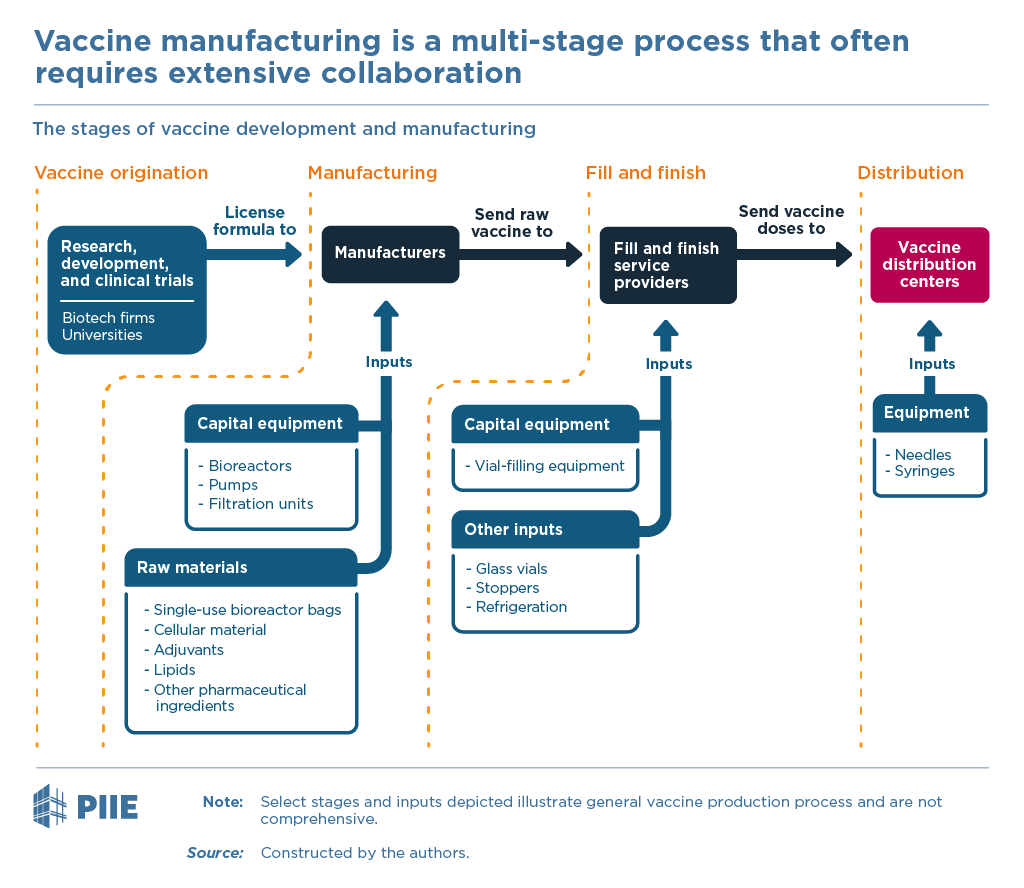
CureVac news is disappointing. But if it is not a viable vaccine, current constraints to global vaccine production raise an important POLICY QUESTION:
Can policymakers help Curevac reallocate its scarce supplies of vaccine-making inputs to help OTHER companies scale up? 🧵 1/10
Can policymakers help Curevac reallocate its scarce supplies of vaccine-making inputs to help OTHER companies scale up? 🧵 1/10
https://twitter.com/helenbranswell/status/1405269082769747969
March: White House and European Commission set up a liaison between Jeffrey Zients and Thierry Breton to help overcome input shortages facing vaccine makers on both sides of the Atlantic... 2/10
politico.eu/article/eu-us-…
politico.eu/article/eu-us-…

April: CureVac CEO complains about lack of access to inputs, blaming the Defense Production Act:
“Be it chemicals, equipment, filters or hoses: US manufacturers are obliged first to meet American demand, and that means we are slipping down the list” 3/10
reuters.com/business/healt…
“Be it chemicals, equipment, filters or hoses: US manufacturers are obliged first to meet American demand, and that means we are slipping down the list” 3/10
reuters.com/business/healt…
May: policymakers help CureVac access inputs in short supply it needed to make vaccines:
“CureVac is grateful that with the help of the EU and U.S. officials, some critical issues could be resolved," the company said in a statement to Reuters... 4/10
reuters.com/world/us/eu-pe…
“CureVac is grateful that with the help of the EU and U.S. officials, some critical issues could be resolved," the company said in a statement to Reuters... 4/10
reuters.com/world/us/eu-pe…
June: Now Curevac not only has scarce inputs on hand (“chemicals, equipment, filters or hoses”) to manufacture vaccines, but it has also reserved capacity that it may no longer need...
..including fill and finish by Fareva at a site in France... 5/10 curevac.com/en/2020/12/09/…
..including fill and finish by Fareva at a site in France... 5/10 curevac.com/en/2020/12/09/…
Novartis had also signed on to manufacture drug product at the Novartis Kundl, Austria site that might no longer be needed... 6/10
novartis.com/news/media-rel…
novartis.com/news/media-rel…
CureVac had also brought on board Celonic’s plant in Heidelberg, Germany to manufacture mRNA vaccine and lipids that might no longer be needed... 7/10
biopharminternational.com/view/celonic-g…
biopharminternational.com/view/celonic-g…
The need to now reallocate inputs and facilities - given shortages - was expected and something @TomBollyky and I explain to policymakers HERE... 8/10
piie.com/blogs/trade-an…
piie.com/blogs/trade-an…
Yesterday, at the US-EU Summit, there was the announcement of a “Joint U.S.-EU COVID Manufacturing and Supply Chain Taskforce”
Dear Joint U.S.-EU COVID Manufacturing and Supply Chain Taskforce,
Please read this thread... 9/10
whitehouse.gov/briefing-room/…
Dear Joint U.S.-EU COVID Manufacturing and Supply Chain Taskforce,
Please read this thread... 9/10
whitehouse.gov/briefing-room/…

*THIS* sort of reallocation of scarce vaccine inputs and manufacturing production capacity may get the world more COVID-19 vaccine doses faster than many other immediate-term policy initiatives being contemplated. ENDS/
• • •
Missing some Tweet in this thread? You can try to
force a refresh













